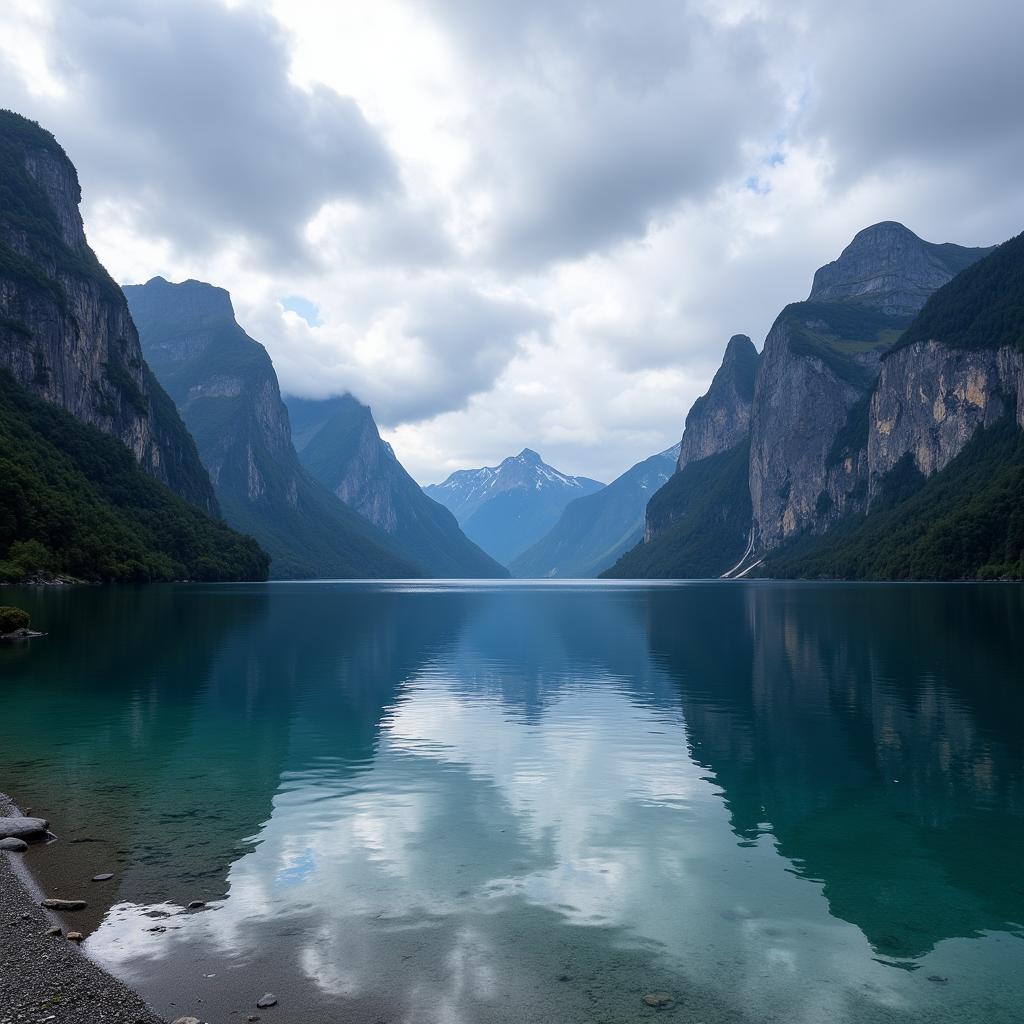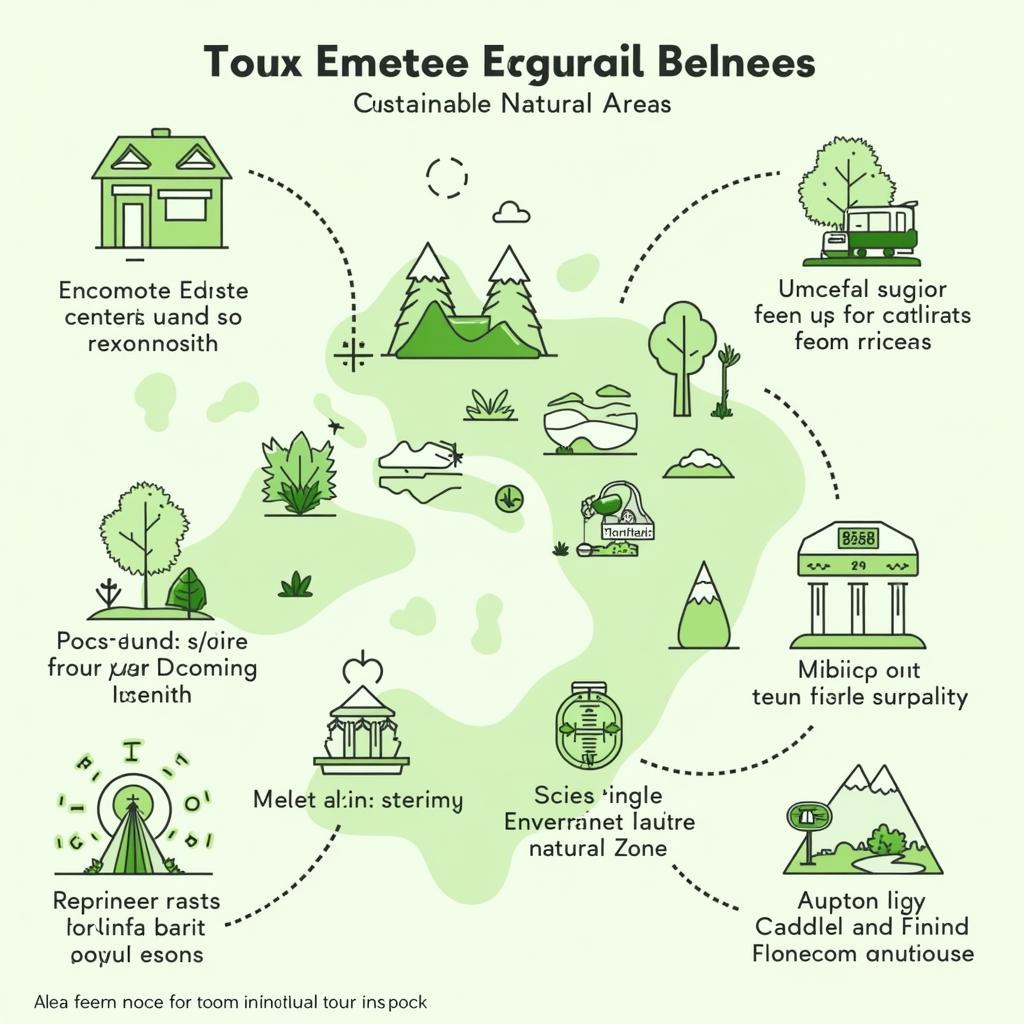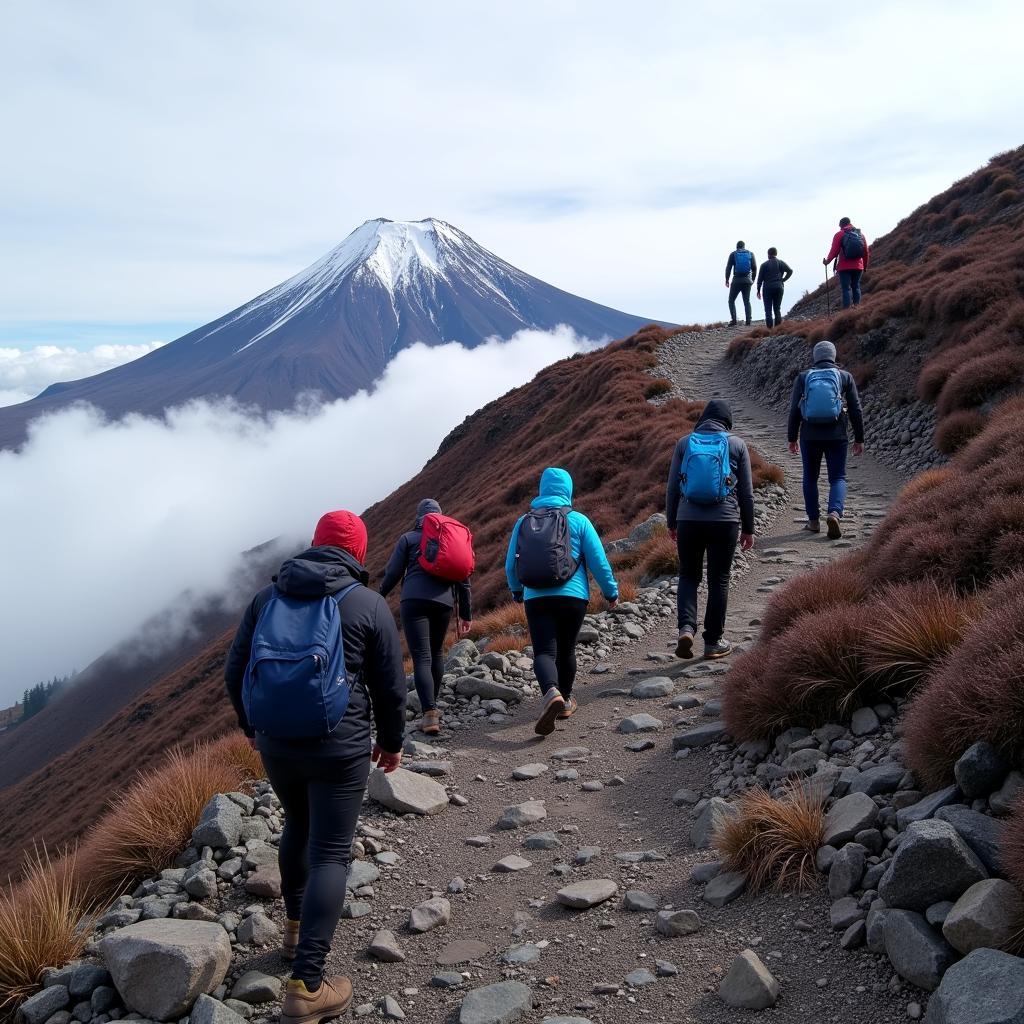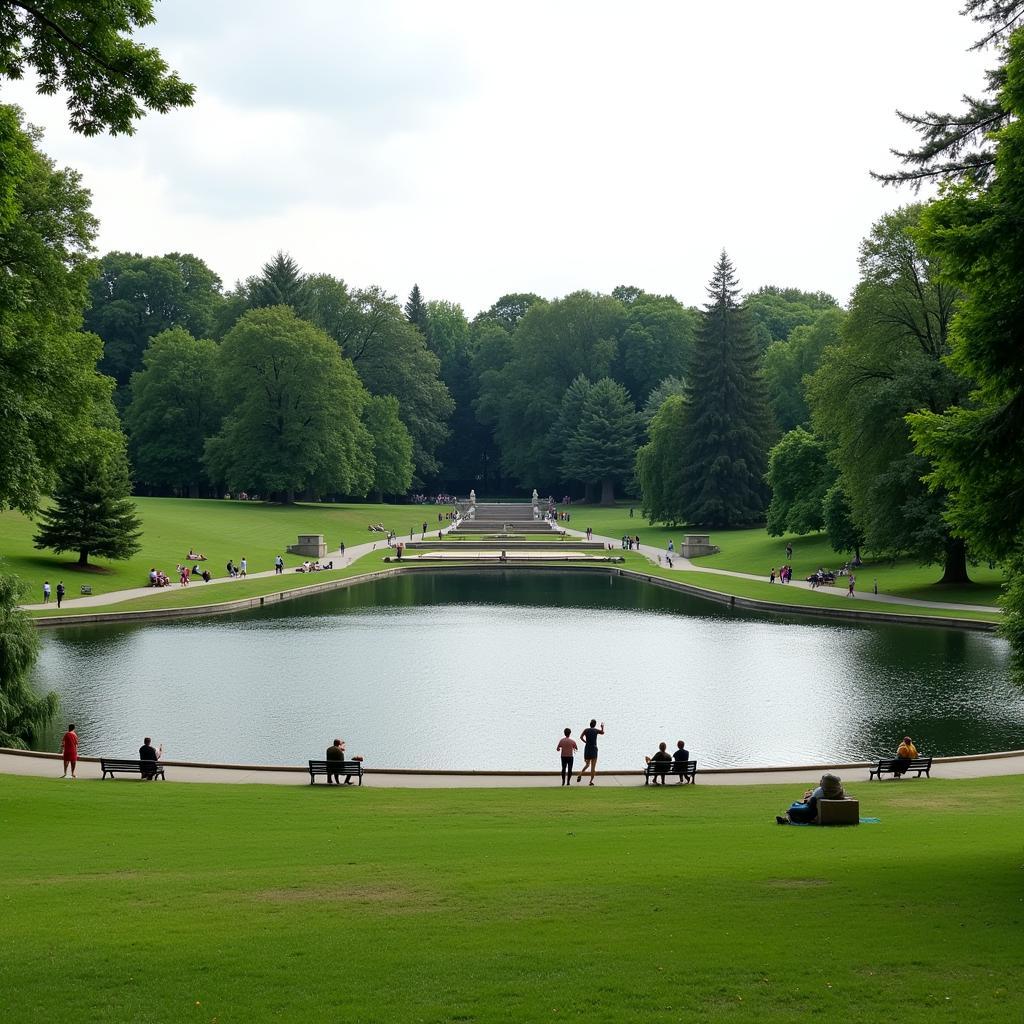The topic of describing a scenic place you want to visit is a common theme in IELTS Speaking tests. It frequently appears in Part 1 and Part 2, offering candidates an opportunity to showcase their vocabulary, fluency, and ability to construct coherent responses. Let’s explore how to excel in this topic across all parts of the IELTS Speaking test.
Part 1: Introduction and Interview
In Part 1, the examiner may ask questions related to travel and scenic places. Here are some typical questions you might encounter:
- Do you like traveling to scenic places?
- What’s the most beautiful place you’ve ever visited?
- How often do you travel to enjoy natural scenery?
Let’s focus on the first question as an example:
Examiner: Do you like traveling to scenic places?
Sample Answer (Band 7-8):
“Absolutely! I’m quite passionate about exploring scenic destinations. There’s something truly captivating about immersing yourself in natural beauty. Whether it’s breathtaking mountain vistas or serene coastal landscapes, I find that these experiences not only rejuvenate my spirit but also broaden my perspective on the world around us.”
Key features:
- Use of advanced vocabulary: “passionate about,” “truly captivating,” “immersing”
- Descriptive language: “breathtaking mountain vistas,” “serene coastal landscapes”
- Personal reflection: “rejuvenate my spirit,” “broaden my perspective”
Part 2: Long Turn
For Part 2, you might receive a cue card like this:
Describe a scenic place you want to visit
You should say:
- Where it is
- How you know about this place
- What you expect to see there
- And explain why you want to visit this placeSample Answer (Band 8-9):
“I’d like to talk about a breathtaking destination that has been on my bucket list for quite some time – the Fiordland National Park in New Zealand. This awe-inspiring location came to my attention through a captivating documentary I watched about the world’s most pristine natural wonders.
Situated on the southwest coast of New Zealand’s South Island, Fiordland is renowned for its dramatic landscapes. I expect to be mesmerized by the towering fjords carved by ancient glaciers, their sheer cliffs plunging into crystal-clear waters. The park is home to Milford Sound, often hailed as the ‘eighth wonder of the world‘, with its majestic Mitre Peak rising from the water.
I’m particularly excited about the prospect of exploring the park’s lush rainforests, teeming with unique flora and fauna. The thought of hiking through ancient beech forests and discovering hidden waterfalls is truly exhilarating. I’m also eager to spot some of New Zealand’s endemic wildlife, such as the kiwi bird or the rare takahe.
The main reason I’m drawn to this place is its unspoiled beauty and the opportunity it offers for complete immersion in nature. In our increasingly urbanized world, finding such pristine wilderness is becoming rare. I believe that experiencing the raw power and beauty of Fiordland would be not just visually stunning but also profoundly moving on a personal level. It represents a chance to disconnect from the hustle and bustle of daily life and reconnect with the natural world in its most spectacular form.”
 Breathtaking view of Fiordland National Park in New Zealand
Breathtaking view of Fiordland National Park in New Zealand
Key features:
- Rich vocabulary: “breathtaking,” “awe-inspiring,” “mesmerized”
- Specific details: “Fiordland National Park,” “Milford Sound,” “Mitre Peak”
- Personal reflection: “drawn to,” “profoundly moving”
- Well-structured response covering all points in the cue card
Follow-up Questions:
- What activities would you like to do in this scenic place?
- Do you think it’s important to preserve such natural areas?
Sample Answer for Question 1 (Band 8-9):
“In Fiordland National Park, I’d be keen on engaging in a variety of activities that would allow me to fully immerse myself in its natural splendor. Primarily, I’d love to embark on some of the park’s renowned hiking trails, such as the Milford Track, often referred to as the ‘finest walk in the world‘. This would give me the opportunity to experience the park’s diverse ecosystems up close.
Additionally, I’d be fascinated to take a kayaking expedition through the fjords. This would offer a unique perspective, allowing me to appreciate the sheer magnitude of the cliffs from water level and perhaps even encounter some of the local marine life, like dolphins or seals.
Lastly, I’d be intrigued by the idea of joining a guided nature walk with a local expert. This would enhance my understanding of the park’s ecological significance and perhaps provide insights into the conservation efforts being made to preserve this pristine wilderness for future generations.”
Key features:
- Varied activities: hiking, kayaking, guided nature walk
- Advanced vocabulary: “keen on engaging,” “fully immerse,” “ecological significance”
- Personal engagement: “fascinated,” “intrigued”
- Connection to broader themes: conservation, ecological understanding
Part 3: Two-way Discussion
In Part 3, the examiner might ask more abstract questions related to scenic places and tourism. Here’s an example:
Examiner: How does tourism impact scenic natural areas?
Sample Answer (Band 8-9):
“The impact of tourism on scenic natural areas is a complex issue with both positive and negative aspects. On the positive side, tourism can bring significant economic benefits to local communities, providing jobs and income that can support conservation efforts. It can also raise awareness about the importance of preserving these natural wonders, potentially leading to increased environmental protection measures.
However, there are also substantial drawbacks to consider. Overtourism can lead to environmental degradation, with issues such as erosion of hiking trails, disturbance of wildlife habitats, and increased pollution. The construction of tourist infrastructure, like hotels and roads, can also mar the natural beauty that attracted visitors in the first place.
To mitigate these negative impacts, many destinations are now implementing sustainable tourism practices. This includes measures such as limiting visitor numbers, promoting eco-friendly accommodations, and educating tourists about responsible behavior in natural areas. The challenge lies in striking a balance between allowing people to experience these magnificent landscapes and ensuring their long-term preservation. It’s a delicate equilibrium that requires careful management and ongoing assessment to maintain the integrity of these precious ecosystems.”
 Sustainable tourism practices in scenic natural areas
Sustainable tourism practices in scenic natural areas
Key features:
- Balanced perspective: discussing both positive and negative impacts
- Advanced vocabulary: “complex issue,” “mitigate,” “delicate equilibrium”
- Specific examples: “erosion of hiking trails,” “disturbance of wildlife habitats”
- Analytical approach: discussing solutions and challenges
Vocabulary and Phrases to Boost Your Score
To elevate your IELTS Speaking performance when describing scenic places, consider incorporating these advanced words and phrases:
-
Awe-inspiring /ˈɔː ɪnˌspaɪərɪŋ/ (adjective): Causing feelings of awe or admiration.
Example: “The Grand Canyon is truly an awe-inspiring sight.” -
Picturesque /ˌpɪktʃəˈresk/ (adjective): Visually attractive, especially in a quaint or charming way.
Example: “The picturesque village nestled in the valley was like something from a postcard.” -
Panoramic /ˌpænəˈræmɪk/ (adjective): Giving a wide view of an extensive area.
Example: “From the mountaintop, we enjoyed panoramic views of the surrounding countryside.” -
Pristine /ˈprɪstiːn/ (adjective): In its original condition; unspoiled.
Example: “The beach was pristine, with no sign of human interference.” -
To be captivated by (phrase): To be fascinated or entranced by something.
Example: “I was completely captivated by the Northern Lights dancing across the sky.”
Incorporating these words and phrases into your responses can demonstrate a rich vocabulary and help you achieve a higher band score.
Tips from an IELTS Examiner
As an IELTS examiner, I recommend the following strategies to excel in describing scenic places:
-
Build a diverse vocabulary: Familiarize yourself with a range of descriptive words for different types of landscapes.
-
Practice visualization: When describing a place, try to paint a vivid picture with your words.
-
Include personal reflections: Don’t just describe what you see, but also how it makes you feel or why it’s significant to you.
-
Use a variety of sentence structures: Mix short and long sentences to maintain the examiner’s interest.
-
Prepare examples: Have a few favorite scenic places in mind that you can talk about in detail.
Remember, the key to success in IELTS Speaking is not just about what you say, but how you say it. Aim for fluency, coherence, and natural expression, and you’ll be well on your way to achieving a high score.
 IELTS Speaking practice for describing scenic places
IELTS Speaking practice for describing scenic places
For those interested in further improving their IELTS Speaking skills, you might find it helpful to describe a scenic spot you would like to revisit or describe a beach you want to visit. These topics can provide additional practice in describing natural beauty and personal experiences. Additionally, if you’ve had the opportunity to describe a nature reserve you have visited, this can be an excellent way to showcase your vocabulary related to wildlife and conservation.
Remember, the more you practice, the more confident and articulate you’ll become in your IELTS Speaking test. Good luck with your preparation!


